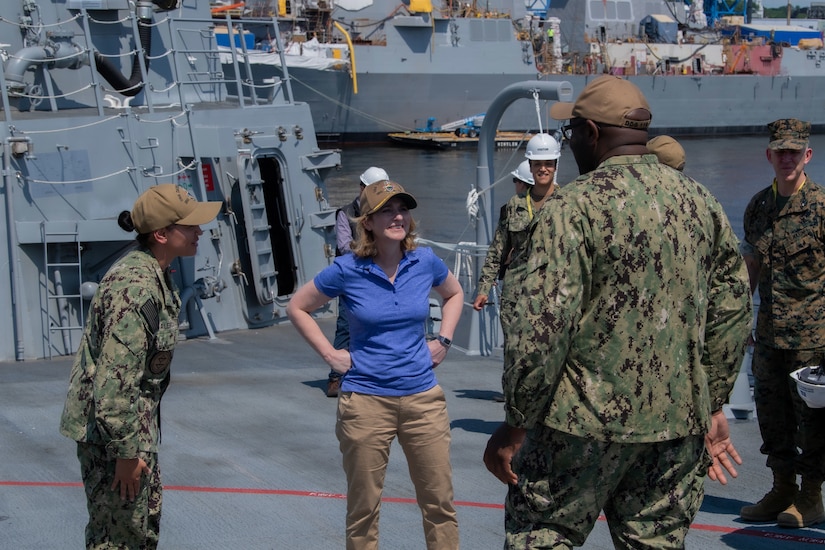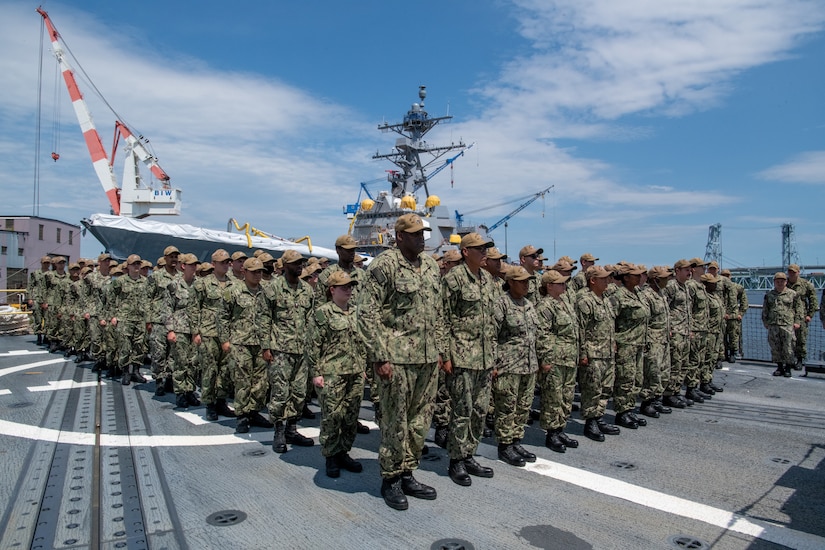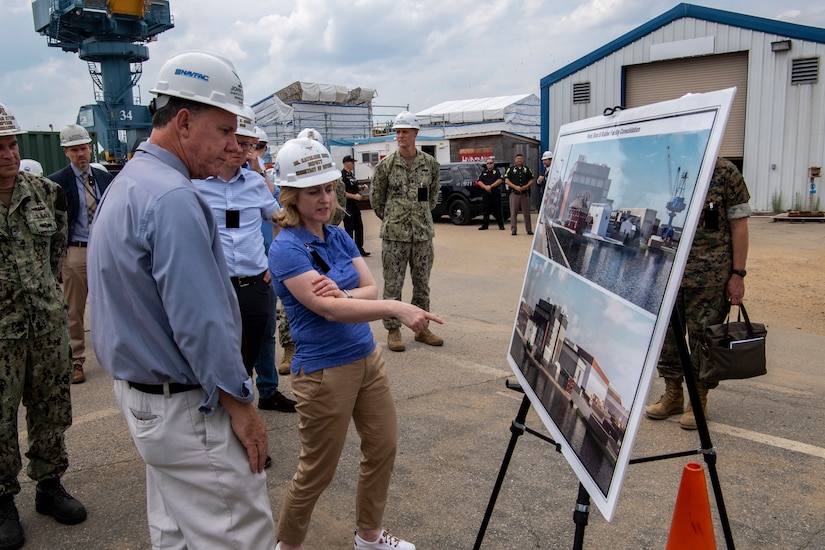July 9, 2021 | , DOD News

The deputy secretary began her trip June 8 at Bath Iron Works in Brunswick, Maine, where she met with troops and toured the USS Daniel Inouye, an Arleigh Burke-class destroyer. She traveled that afternoon to Portsmouth Naval Shipyard and Pease Air National Guard in Portsmouth, New Hampshire.
"How [ships] innovate is a huge piece, of course, of where the department is going today with different kinds of actors, research institutions, universities and startups …" she said of ship and submarine modernization.
Those elements are important to how DOD modernizes by ensuring shipyards have space availability and move with agility through repair work and understand software upgrades that are moving at a fast pace, Hicks said.

At Pease, the deputy secretary met with troops and toured the KC-46A Pegasus, a 2019 wide-bodied, multi-role tanker aircraft that can refuel all U.S., allied and coalition military aircraft that are in line with international aerial refueling procedures. The KC-46, used by the Air Force, can also carry passengers, cargo and patients, according to Boeing.
Traveling to Cambridge, Massachusetts, Hicks went to Harvard University's engineering school and the Massachusetts Institute of Technology for innovation assessments and briefings. At Harvard, she met with former Defense Secretary Ash Carter and Marine Corps Gen. Joseph F. Dunford Jr., former chairman of the Joint Chiefs of Staff.
DOD is building on the path Carter laid in his Defense Department career by working in partnership with the private sector and academia to quickly get innovation into the warfighter's hands on the battlefield.

At MIT, Hicks visited military and academic teams at the Air Force-MIT Artificial Intelligence Accelerator, which is designed to make fundamental advances in AI to improve Air Force operations. She also went to the Army's Natick Soldier System Center at Draper Laboratory, a nonprofit engineering innovation company, and The Engine, a venture firm founded by MIT to support "tough tech" companies.
DOD has done well in the last decade to make clear its interest in embracing new technology, she said.
"Where we need to go next is knitting [everything] together so that we have an ecosystem in the department that doesn't crush the ability to have innovation in small teams because I think there's a lot to be gained from that," she said.

Hicks emphasized the need to have what she called feedback loops and the ability to understand what such teams are doing to share lessons learned and spread innovation to share with the warfighter.
"[Regardless] of what that pathway is, we need to hear those insights and lessons learned from those who are … deploying forward into the innovation base," Hicks said.






No comments:
Post a Comment